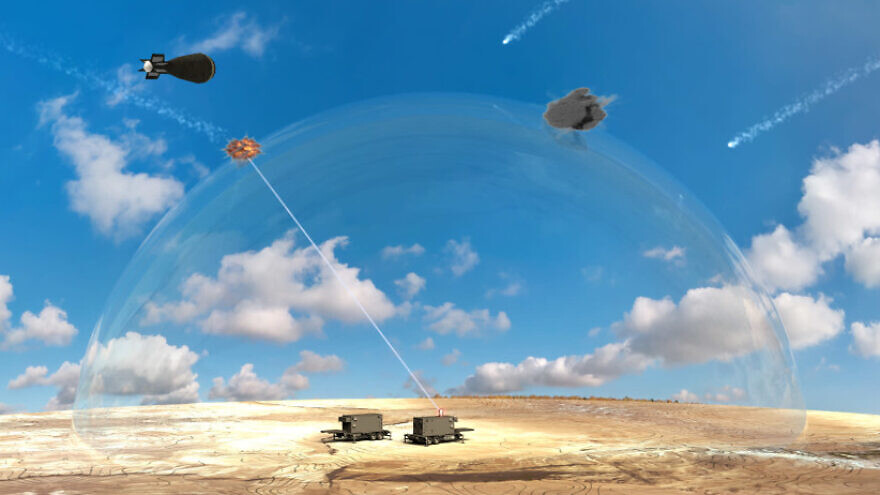Israeli Defence Minister Benny Gantz has confirmed that Israel has joined a new Middle Eastern military partnership composed of, among other nations, the United Arab Emirates, Bahrain, Morocco and the United States.
Known as the Middle East Air Defence Alliance, it is designed to fend off missile, rocket, and unmanned drone attacks from Iran, whose nuclear program, hegemonic foreign policy and support of regional proxies like Hezbollah, Hamas and the Houthis have alarmed not only Israel but conservative Arab states.
“This program is already operative and has already enabled the successful interception of Iranian attempts to attack Israel and other countries,” said Gantz on June 20.

He made the announcement nearly three weeks after the disclosure that Israel has built and tested a working prototype of the Iron Beam, a revolutionary ground-based laser air defence system that could be used by Israel’s Arab allies as well
According to outgoing Prime Minister Naftali Bennett, the Iron Beam is a “strategic game changer.” If it proves to be as successful in the field as it has been in tests, it could provide Israel with a “laser wall” of protection, he said earlier this month.

Gantz claims that Israel is one of the world’s first countries to develop such a capability.
Created after 20 years of research and development and the investment of hundreds of millions of dollars, the Iron Beam is a high-powered laser gun that trains laser beams on targets like guided missiles, rockets, drones and anti-tank missiles in flight.

Still a few years away from being operational, it is intended to complement rather than replace the existing elements in Israel’s air defence system — the short-range Iron Dome, the short and medium-range David’s Sling, and the long-range Arrow-3.

Israel developed these weapons due to Arab aggression.
Palestinian guerrillas based in southern Lebanon launched rockets at northern Israel in the 1970s and early 1980s, prompting Israel to invade Lebanon in 1982.
During the first days of the 1991 Gulf War, Iraq fired 39 Scud missiles at Israeli cities in a futile attempt to draw Israel into the fighting.
Prior to and following Israel’s unilateral withdrawal from the Gaza Strip in 2005, Hamas and Islamic Jihad bombarded Israeli settlements in Gaza and towns in Israel with crude rockets. These bombardments have led to four cross-border wars since 2008.
Forty years ago, the United States developed the Strategic Defence Initiative (Star Wars), an air defence system using laser technology, but the project was abandoned in 1993 after a series of failures. In the 1990s, the United States and Israel produced the Nautilus laser defence system, but it was scrapped due to its mediocre performance.
The Iron Beam, though, seems to be a winner.
One of its chief advantages is its extremely low operating cost. One interception costs approximately $3.50. By contrast, the cost of an Iron Dome interception is about $80,000.
Bennett believes the Iron Beam system will “break the equation” that forces Israel to spend millions of dollars to defend itself against the cheaply-produced rockets, drones and incendiary balloons and kites launched from Gaza by Hamas and Islamic Jihad.
He thinks that Israel’s new allies in the Arab world, the United Arab Emirates and Bahrain, and even an emerging partner like Saudi Arabia, will be interested in acquiring the Iron Beam.
The Iron Beam, however, is hampered by one serious limitation. It cannot shoot through clouds. And since Israel has 60 to 80 days of rain and cloud coverage annually, the Iron Beam may sometimes be unoperational, says Uzi Rubin, the founder and former director of Israel’s Missile Defence Organization.
In addition, it remains to be seen whether the Iron Beam will be effective against Iran’s and Hezbollah’s precision-guided missiles, or against a new class of Shehab and Jenin drones developed by Hamas and Islamic Jihad.
Despite its apparent flaw, the Iron Beam may indeed be a breakthrough weapon that will help Israel immeasurably and significantly alter the balance of power in the Middle East.
